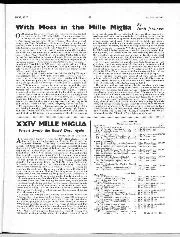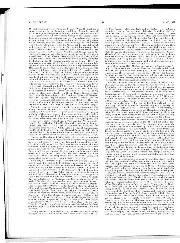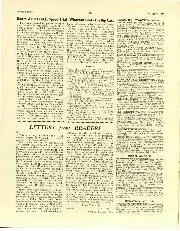THE NEW GHOST SILENCER.
There are very few motor-cyclists who have not heard of the Ghost Silencer ; from the moment of its inception it aroused interest, partly by its unique shape and arrangement, but perhaps principally by the guarantee given with it, namely, that its manufacturers would indemnify users of the Ghost against any fines or costs accruing through its use. Nevertheless, many have fought shy of it purely because of the advertised illustration, which displays its internal parts ; they cannot see how it fails to get clogged and how back-pressure can be averted.
Recently, we conducted a fairly exhaustive test of the small size Ghost ; it was fitted to a single cylinder Zenith and sidecar. Naturally, no better test can there be for a silencer than to fit to such a machine. Any high efficiency single is noisy when solo, but when pulling a sidecar the exhaust noise is of greater intensity and frequency, also by reason of the need for more gear work.
After observing the performance of the machine over a long period including a great many hills, in fact, this machine followed the competitors in the International Six Days, we drove it ourselves for some miles, and our observations may be of interest to a great many readers.
The machine was undoubtedly silent, what exhaust noise there was present being of a pleasant nature, and not calculated to attract the attention of any man in blue. Even on low gear, hill ascents with the engine revving full out, the silencer handled the output in an effective manner.
The construction of the latest Ghost differs only from last year’s model inasmuch that the front end of the wire cone is flattened instead of being pointed. It was found that considerably less resistance to the gases was obtained by this design. The actual ratio of metal to air space in the cone is interesting. One sixth only is metal ; this is not just any steel shavings, but a scientifically thought-out low carbon grade of mild steel. This is prepared by being
rolled flat then twisted laterally, three twists going to the inch.
After the demonstration, the silencer was removed from the pipe—one fly nut releasing the whole—and to our surprise, nothing more than a thin film of soot was present on the cone. In view of the fact that the silencer had not been touched for about fifteen hundred miles this is quite a phenomenon when it is considered that on the backstand of a machine which accompanied us a small carbon cone would collect every ten miles or so. This was about one inch long with a similar base. In the case of the Ghost this is somehow propelled right through the mesh of wire, and yet without causing any more than a modicum of back-pressure. For ordinary touring, nothing could be more suitable than such a well-behaved silencer as the Ghost.





